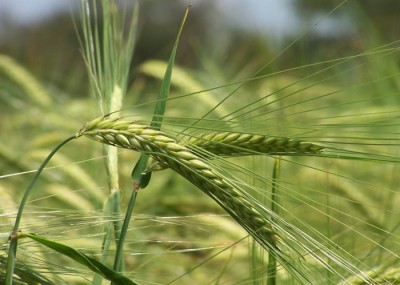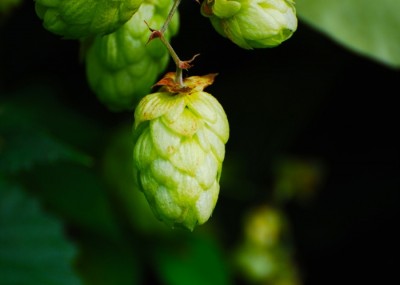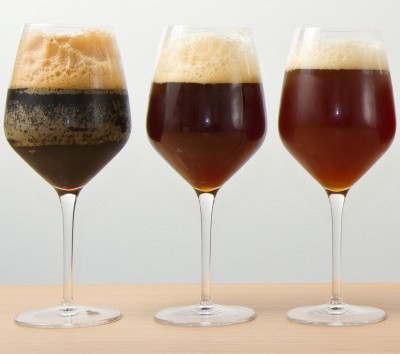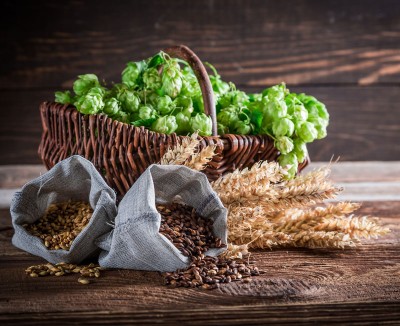What is beer?
All that is needed to produce this God given drink is - water, malt, yeast and hops.
Source: Alt du trenger å vite om øl by Espen Smith
From barley to beer
Beer must undergo five processes before it is ready to be enjoyed: malting, brewing, fermentation, storage and dispensing.
Malting: Mature barley are moistened, placed in water to germinate. After several days, the process is stopped by heating. Then carbohydrates using enzymes has been broken down to maltose. The yeast later converts this sugar into alcohol.
Brewing: The malt is milled and cooked, then separation of shells and other unwanted constituents are made. This is called mashing. The waste that is removed is called mash and spent grain. The remaining fraction is called wort, and now supplemented with hops. After a rehash of the mixture is cooled it is now ready for fermentation.
Fermentation: A yeast culture is added to the wort and fermentation begins. Depending on the type of beer, brewing method, the desired alcoholic strength and flavor, this process takes two to ten days.
Maturing: The brew is cooled and stored in tanks. Here it will clear and mature further. How long depends on the type of beer. Some variations of lager are stored up to 90 days, while others may be ready to be sold much earlier.
Bottling: After maturing the beer is filtered. Often it is pasteurized in order to enhance sustainability. Then it is tapped into bottles, cans or barrels.
Three ways to ferment
The three methods used to ferment the beer is top-fermentation, spontaneous fermentation and bottom fermentation. All leave their mark on the beer, some brewers combine these methods.
Top-fermented beer: This is the oldest and most widely used method of fermentation of all time. At first it was not entirely understandable what happened - that the soaked barley and water infiltrated by the invisible yeasts in the air which caused the mixture to begin to bubble and then turn into an alcoholic beer. It is therefore not surprising that people at the time spoke of the gift of God, the blessed brew and so on. It was believed simply that there were supernatural forces that were behind this process.
Gradually people learned to control yeast strain and got a better and became a more predictable brew. Drawings and photos from earlier times often show open barrels where the yeast culture float on top. Hence the name of the top fermented beer.
Yeast culture was grown separately under controlled conditions, were kept cold, then added to the brewing vats. The process required a temperature around 16-20 degrees Celsius.
Today, variations of the yeast Saccharomyces cerevisiae is used in the fermentation. There are still a few breweries that use open brewing vats, but even the top fermentation process increasingly takes place in closed tanks.
What often distinguishes the top-fermented beer is the complexity and the fresh, rich flavor. The beer is fruity and full of sweetness, bitterness and resentment at the same time.
The brew is as a rule not matured, but some strong alcohol types are matured for some time and may in some cases, continue fermenting in the bottle and barrel.
Spontaneous fermented beer: That the name suggests - a brew exposed to wild yeast in the air and which ferments spontaneously.
In the area outside of Brussels, we find perhaps the most distinctive beer in the world, lambic, a spontaneously fermented beer. The name comes from the city Lambeek, where the fermentation method was first discovered and used for beer production. It was actually just to open a hatch in the roof of the brewhouse to let in the wild yeast.
There are three main types of lambic: lambic, lambic gueuze and Kriek. In addition, there are currently lambic variations in which all sorts of flavors are added, often the juice of raspberries, strawberries, blueberries and even banana.
Bottom-fermented beer: This is now the most common brewing method that actually accounts for 95 percent of all beer produced in the world. Brewing takes place at a temperature of 8-12 °C and it takes up to one week before the process is complete. Then the beer is stored for three months to develop taste and fullness.











